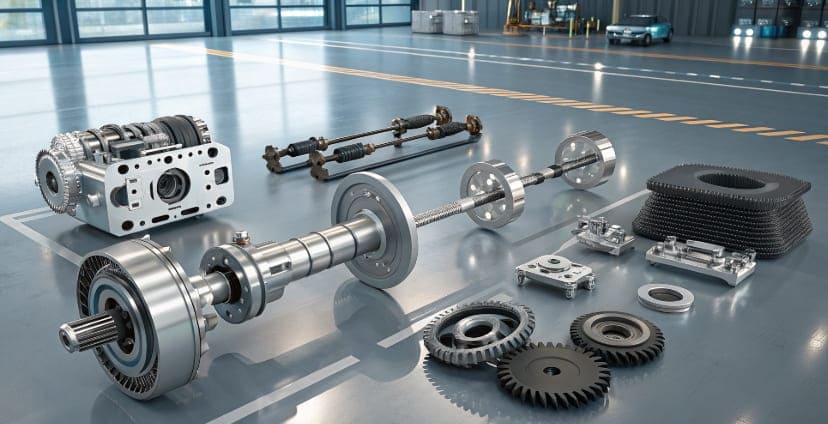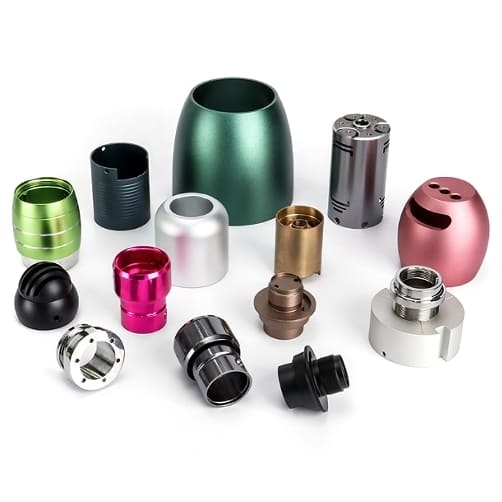
When it comes to automotive manufacturing, precision and reliability are non-negotiable. One of the key technologies that has revolutionized this industry is Computer Numerical Control (CNC) machining. As an avid follower of manufacturing advancements, I’ve been fascinated by how CNC machining has transformed the way automotive parts are produced. In this article, I’ll delve into the various automotive parts that can be processed using CNC machining, highlighting the benefits and explaining why this technology is indispensable in modern car manufacturing.
CNC Machining: The Unsung Hero Powering Your Car
We often take our cars for granted, hopping in and expecting them to whisk us away reliably. But beneath the sleek exterior lies a complex network of components, meticulously crafted to work in perfect harmony. And behind the creation of many of these parts? Computer Numerical Control (CNC) machining.
As someone fascinated by the intricate workings of machines, I’ve always been impressed by the precision and versatility of CNC technology. In the automotive industry, CNC machining isn’t just a helpful tool; it’s a cornerstone of modern manufacturing. Let’s delve into the specific automotive parts that benefit from this incredible process.
Why CNC Machining is Perfect for Automotive Parts
Before we dive into specifics, let’s quickly touch on why CNC machining is so crucial in the automotive world. The key advantages are:
- Precision: CNC machines can create parts with incredibly tight tolerances, crucial for components that need to fit together perfectly for optimal performance and safety.
- Repeatability: Mass production becomes incredibly accurate and efficient. Each part produced is virtually identical to the last, which is critical in the automotive industry’s high-volume manufacturing.
- Material Versatility: CNC machines can work with a wide range of materials, from aluminum and steel to plastics and composites, allowing manufacturers to choose the best material for each part’s specific needs.
- Complex Geometries: CNC machining allows for the creation of intricate shapes and designs that would be impossible or prohibitively expensive to produce using traditional methods.
- Automation: CNC machining is largely automated, reducing labor costs and increasing production speed.
The Range of Automotive Parts Processed by CNC Machining
Engine Components
One of the most critical areas where CNC machining shines is in the production of engine components. These parts require extreme precision to ensure optimal performance and longevity. Here are some of the key engine components that can be CNC machined:
- Cylinder Heads: These are responsible for sealing the engine and can be machined to precise tolerances to ensure a perfect fit.
- Crankshafts: The crankshaft converts the linear motion of the pistons into rotational motion. CNC machining ensures that it is perfectly balanced and smooth.
- Camshafts: Camshafts control the timing and movement of the valves in the engine. Precision machining is essential to maintain the exact specifications required for efficient engine operation.
- Pistons: Pistons are subjected to high temperatures and pressures. CNC machining ensures they are uniform and fit perfectly within the cylinder.
- Connecting Rods: These connect the pistons to the crankshaft. High precision is necessary to ensure they can withstand the forces involved in engine operation.
Transmission Components
The transmission system is another vital area where CNC machining plays a significant role. The components of the transmission must be precisely engineered to ensure smooth and reliable gear shifts. Here are some transmission parts that can be CNC machined:
- Gear Shafts: These transfer power from the engine to the wheels. CNC machining ensures that the gears are perfectly aligned and mesh correctly.
- Gearboxes: The gearbox houses the gears and must be manufactured to exact specifications to ensure durability and performance.
- Transmission Cases: These encase the transmission components and must be precise to prevent leaks and ensure proper function.
- Clutches: Clutches are essential for shifting gears. CNC machining can produce clutches with consistent friction and wear resistance.
Suspension and Steering Components
The suspension and steering systems are crucial for vehicle handling and safety. CNC machining ensures that these components are manufactured to exact tolerances, providing a smooth ride and responsive steering. Some notable parts include:
- Control Arms: These connect the wheels to the chassis and must be strong and precisely made to handle the forces of driving.
- Steering Knuckles: These support the wheels and allow them to turn. CNC machining ensures they are robust and accurately shaped.
- Shock Absorbers: These dampen the impact of road irregularities. CNC machining can produce the internal components of shock absorbers to precise specifications.
- Brake Calipers: These are responsible for stopping the vehicle. CNC machining ensures that they are precise and durable.
Body and Chassis Components
While engine and transmission components often steal the spotlight, the body and chassis of a vehicle are equally important. CNC machining can produce a wide range of parts that contribute to the structural integrity and aesthetic appeal of a car. Here are a few examples:
- Door Panels: These can be machined to fit seamlessly with the rest of the vehicle’s body.
- Hood and Trunk Lids: These parts need to be precisely shaped to ensure proper fit and function.
- Wheel Hubs: These connect the wheels to the vehicle and must be strong and precise.
- Chassis Components: Various structural parts of the chassis, such as brackets and supports, can be machined to ensure they are robust and properly aligned.
Interior and Exterior Trim Components
CNC machining is not limited to the mechanical and structural parts of a vehicle. It can also be used to produce interior and exterior trim components that enhance the vehicle’s appearance and functionality. Some examples include:
- Dashboard Components: These can be machined to fit perfectly and look sleek.
- Trim Pieces: Door handles, window frames, and other trim pieces can be CNC machined to ensure a high-quality finish.
- Grilles and Bumpers: These exterior components can be precision-machined to fit exactly and provide a polished look.
Examples of CNC Machining in Automotive Parts
To further illustrate the impact of CNC machining, here are some specific examples:
| Part | Material | CNC Process | Benefits |
|---|---|---|---|
| Cylinder Head | Aluminum | Milling, drilling, tapping. Complex internal passages and valve seats are precisely machined to optimize airflow and combustion efficiency. | Improved engine power, fuel efficiency, and reduced emissions. |
| Gears | Steel | Gear hobbing, gear shaping, grinding. Precise tooth profiles and accurate dimensions are crucial for smooth and efficient power transfer. | Reduced noise and vibration, increased durability, and improved fuel economy. |
| Brake Caliper | Aluminum | Milling, drilling, tapping. Complex internal passages and piston bores are precisely machined to ensure proper hydraulic function. | Consistent braking performance, improved safety, and reduced wear. |
| Fuel Injector | Stainless Steel | Turning, milling, drilling. Extremely tight tolerances are required for the nozzle and valve components to ensure precise fuel metering. | Optimized fuel efficiency, reduced emissions, and improved engine performance. |
Steps to Get Started with CNC Machining for Automotive Parts
- Design the Part: Use CAD (Computer-Aided Design) software to create a detailed design of the part you need.
- Select the Material: Choose the appropriate material for your part based on its function and the environment it will be used in.
- Program the Machine: Convert your design into a CNC program using CAM (Computer-Aided Manufacturing) software.
- Set Up the Machine: Install the necessary tools and materials, and ensure the machine is calibrated correctly.
- Run the Job: Start the machining process and monitor the machine to ensure everything is running smoothly.
- Quality Check: Inspect the finished part to ensure it meets the required specifications and quality standards.
The Future of CNC Machining in the Automotive Industry
As automotive technology continues to advance, CNC machining will play an even more critical role. With the rise of electric vehicles, for example, CNC machining is being used to create complex battery housings, motor components, and other specialized parts. Furthermore, advancements in CNC technology, such as 5-axis machining and automated tool changers, are enabling the creation of even more complex and intricate parts with greater efficiency.
Conclusion
CNC machining is an indispensable technology that is transforming the automotive industry. From engine components to transmission gears to brake calipers, CNC machining is used to create a wide range of parts with exceptional precision, repeatability, and efficiency. As automotive technology continues to evolve, CNC machining will undoubtedly play an even more critical role in shaping the future of transportation.
FAQs
Is CNC machining expensive?
While the initial investment in CNC equipment can be significant, the long-term benefits of increased precision, repeatability, and automation often outweigh the costs.
What materials can be used in CNC machining for automotive parts?
A wide range of materials can be used, including aluminum, steel, stainless steel, titanium, plastics, and composites.
How accurate is CNC machining?
CNC machines can achieve tolerances of within a few thousandths of an inch, making them incredibly precise.
Can CNC machining be used for prototyping?
Yes, CNC machining is an excellent method for creating prototypes quickly and accurately.
What are the limitations of CNC machining?
CNC machining can be limited by the size and complexity of the part, as well as the availability of skilled operators and programmers.
